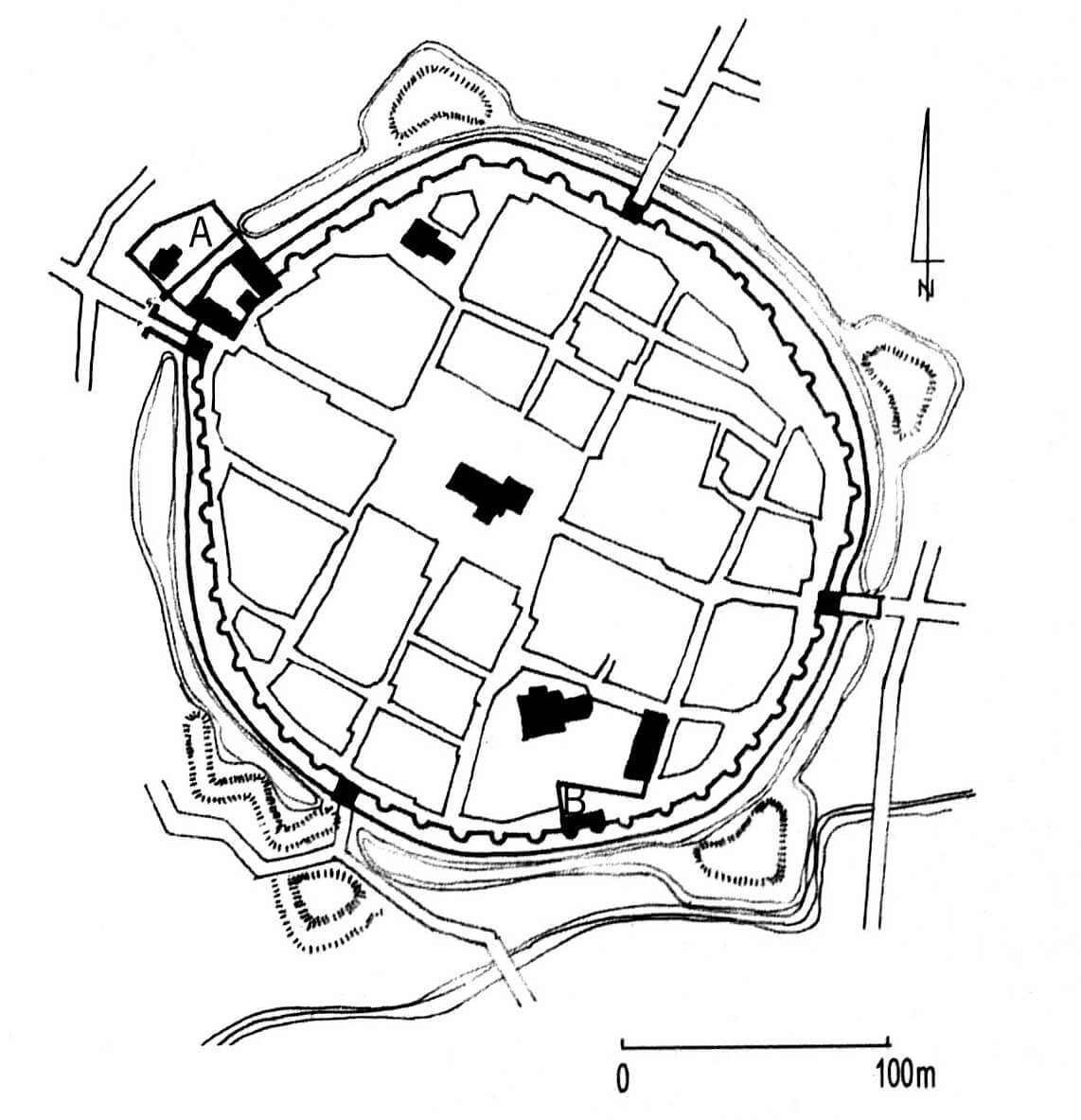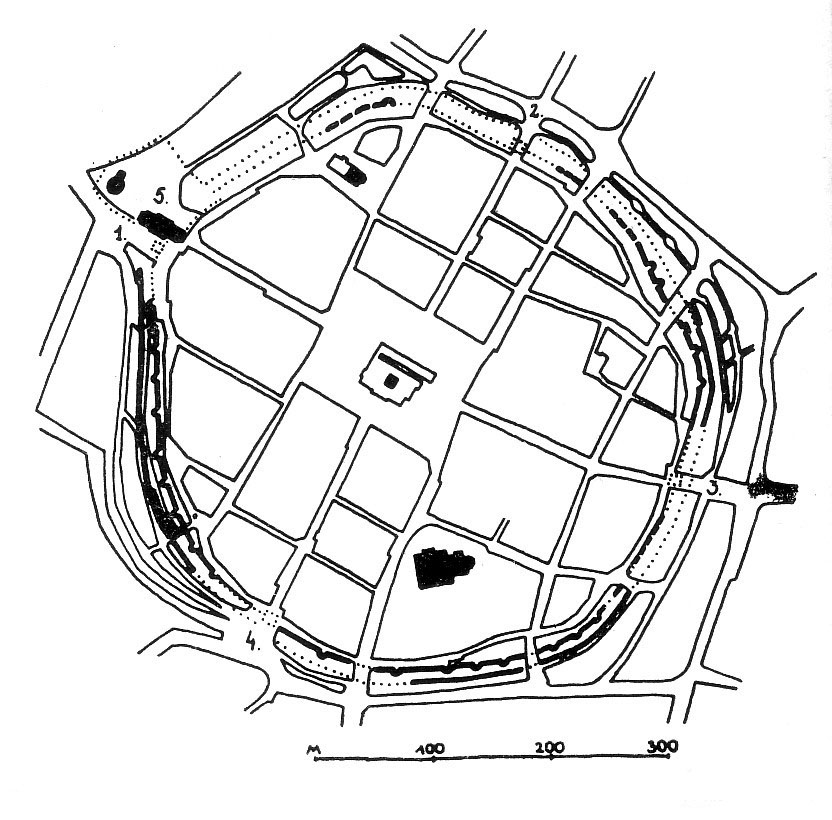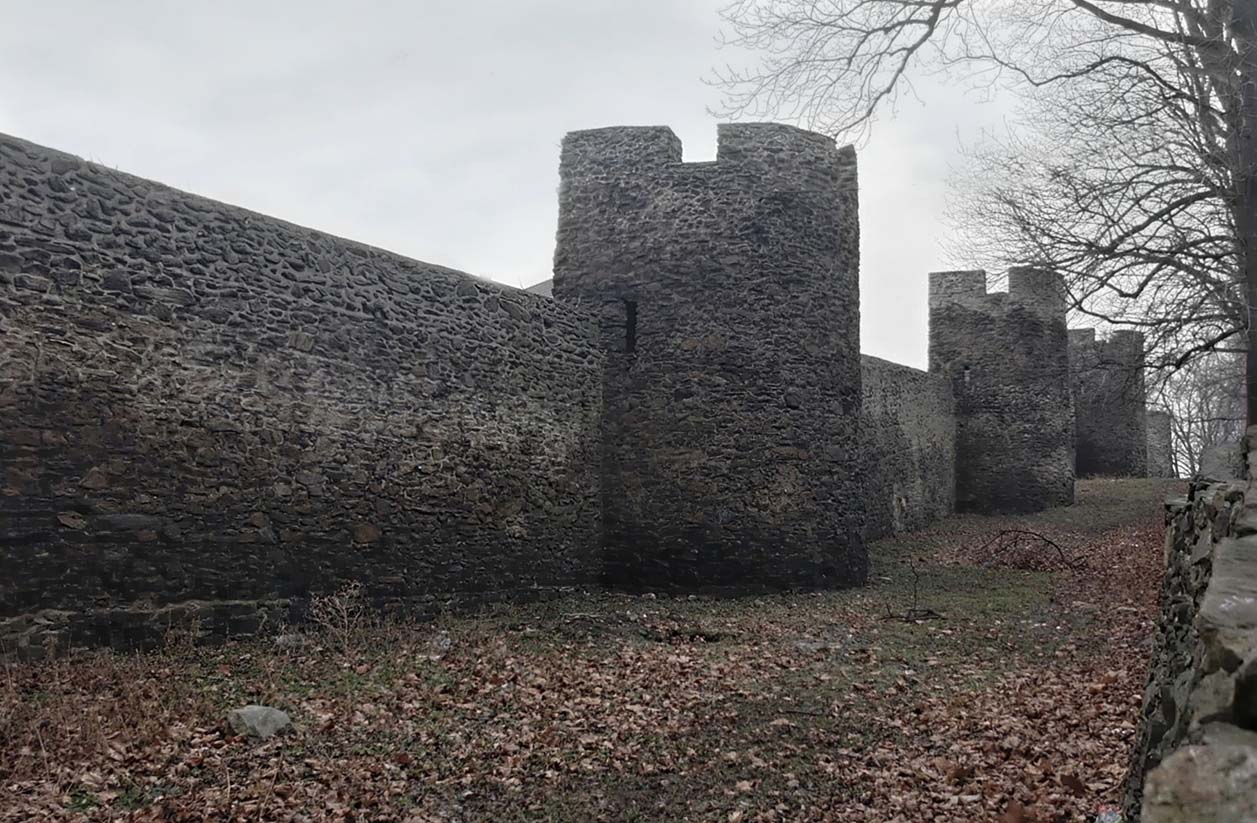History
The town walls in Dzierżoniów (Reichenbach) began to be erected at the end of the 13th century by order of the prince of Świdnica Bolko I. The first ring of walls was completed at the beginning of the 14th century, the second ring of walls was built and expanded during the 15th and 16th centuries as the town developed.
In 1336, Dzierżoniów obtained the right to guard the gates and walls with its own town crew, and not as before with the prince’s garrison. It was an expression of trust of the ruler, but above all the result of difficulties resulting from the too thin forces of the prince’s crew.
In 1428, the town fortifications had to resist the invasion of the Hussite troops. Despite the defence, Dzierżoniów was quickly captured and destroyed, apparently only the parish church had survived. For the next ten week, in winter time, the Hussites were to be stationed in the town, making it a starting point for further raids.
During the Thirty Years’ War, earthworks were erected in front of the town walls, but in the 18th century the fortifications of Dzierżoniów lost their military value. They were maintained mainly because the town’s magistrate cared for the control of those arriving to the town, with the walls being a necessary barrier for collecting flour and meat taxes. In 1880, after the tax system was changed and the excise duty was abolished, the fortifications began to demolished, but in 1903 the government authorities forbade further demolition works, rejecting the aplication of the town council to completely demolish the walls.
Architecture
The town walls surrounded the town on a plan similar to a circle with an area of about 20 ha. They were built of local gneiss, a stone with a granite-like structure, which guaranteed the highest strength and resistance. The defense system consisted of the main perimeter of the walls from the turn of the thirteenth and fourteenth centuries and the younger outer ring of walls, moat and earth ramparts. Within the town walls were included fortifications of two opposite castles: the ducal and castle called Homole. On the southern side, the town was protected by the Piława River.
The inner, older ring of the wall was about 1-1.2 meters thick. Wall was originally equipped with about 30 semicircular half-towers open towards the town and protruding in front of the face of the wall. They were evenly allocated over the entire length of the perimeter at intervals of about 40 meters, which is more or less within the range of an effective crossbow shot. Their crowning was initially in the form of a battlement, later at least in some of the towers crowned with roofs. The outer wall was lower than the inner perimeter, it was also less thick, about 0.8 – 0.9 meters. There were probably no towers or bastions in its line.
Four gates led to the town at the outlet of four main streets running from the market square: Świdnicka from the west, Wrocławska in the north, Ząbkowicka (or Piławska) on the east and the gate leading from the town to the Piława river in the south called Water Gate. All of them were placed in gatehouses with passageways in the groundfloor and rooms for guards on the upper floors.
Current state
The fortifications of Dzierżoniów have survived in about 70 percent, especially from the south-west, on the section between the now non-existent Świdnicka and Water gates. A large fragment of the defensive wall, both internal and external, are also visible in the southern and eastern parts, although most of them is in a much lower condition than the original. Along the fortifications, 21 half-towers have also survived.
bibliography:
Krzywańska A., Dzierżoniów, Warszawa 1984.
Przyłęcki M., Mury obronne miast Dolnego Śląska, Wrocław 1970.
Przyłęcki M., Miejskie fortyfikacje średniowieczne na Dolnym Śląsku. Ochrona, konserwacja i ekspozycja 1850 – 1980, Warszawa 1987.






